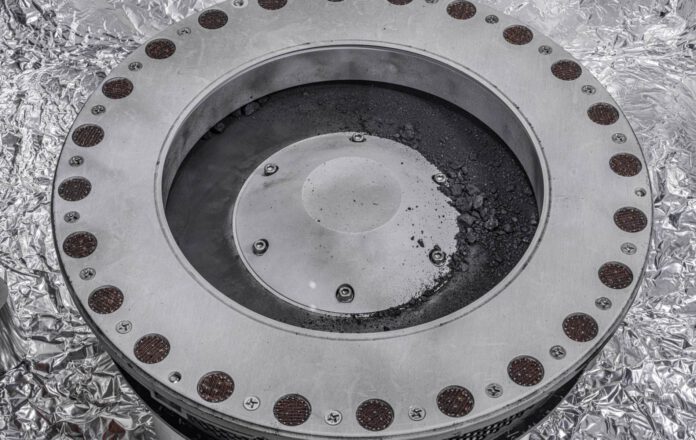
A hint of life
There seems to be a subtle suggestion that the dust, and by extension the asteroid from which it originated, may contain the building blocks of life as we know it here on earth.
NASA’s Recent Discovery
NASA announced this after researchers took an initial look at the dust collected from the asteroid Bennu by the OSIRIS-REx spacecraft in 2020, and recently returned to earth after a long space journey. A comprehensive analysis of the material is expected to take several years. However, eager and impatient NASA scientists have subject the material to a cursory investigation in recent weeks. The preliminary results indicate that the dust is rich in carbon and contains abundant water-bearing clay minerals.
More than Expected
Researchers concluded that OSIRIS-REx gave them more than they dared to hope. The mission was to collect approximately 60 grams of material from Bennu. However, as soon as the researchers opened the capsule, they came across additional material. The safe collection of the sample took much longer than planned due to the unexpected quantity.
“Our laboratories were ready for what Bennu had to offer,” emphasizes Vanessa Wyche, director of the Johnson Space Center, where the sample currently resides. She points out that scientists and engineers worked side-by-side years ahead of the sample’s arrival, to develop the tools needed to extract and secure the sample from the capsule without damaging it. “This enables scientists, both now and in the coming decades, to study this precious gift from the cosmos.”
Promising Evidence of Life
What scientists will find in the future, of course, is a conjecture. The fact that the sample is rich in carbon and water is encouraging, hinting that the dust and the asteroid Bennu may harbor the building blocks of life as we know it on earth. If researchers do find these building blocks in the dust, it gives greater insight into the composition of this asteroid. Such a discovery could also have implications for our understanding of how life began on earth.
The Beginning of Life
Billions of years ago, life began on our planet, made possible by the right conditions and the presence of building blocks for life, such as water and carbon. There is an element of mystery as to how these building blocks arrived on earth. Some scientists believe carbon-and-water-rich asteroids may have played a role. They theorize that these asteroids collided with the young earth, bringing the building blocks for life. By analyzing material from Bennu, researchers hope to test this theory and gain more clarity about the origin of life on earth.
The Value of Bennu
The reason Bennu seems ideal for this kind of study stems from the fact that it originates from the early years of our solar system. Bennu is estimated to be about 4.5 billion years old! What makes this asteroid even more valuable is its nearly unchanged state over these 4.5 billion years. Researchers consider it to be a time capsule, capable of revealing the materials contained in asteroids in the early years of earth, a time when there was no life.
“The sample collected by OSIRIS-REx is the largest carbon-rich asteroid sample ever to arrive on earth and will assist scientists researching the origin of life on our planet,” vouches NASA Chief Bill Nelson.
The fascinating investigation will take place over the coming years not only in Johnson Space Center. NASA has decided to distribute about 30% of the sample to scientists worldwide. A portion of it will also be preserved for future generations of scientists, who may come to different conclusions using potentially new analysis techniques. “The presence of carbon-rich material and an abundance of water-containing clay minerals is just the tip of the iceberg,” explains principal investigator Dante Lauretta. “The journey to better understand our cosmic neighborhood and the origin of life has just begun.”











